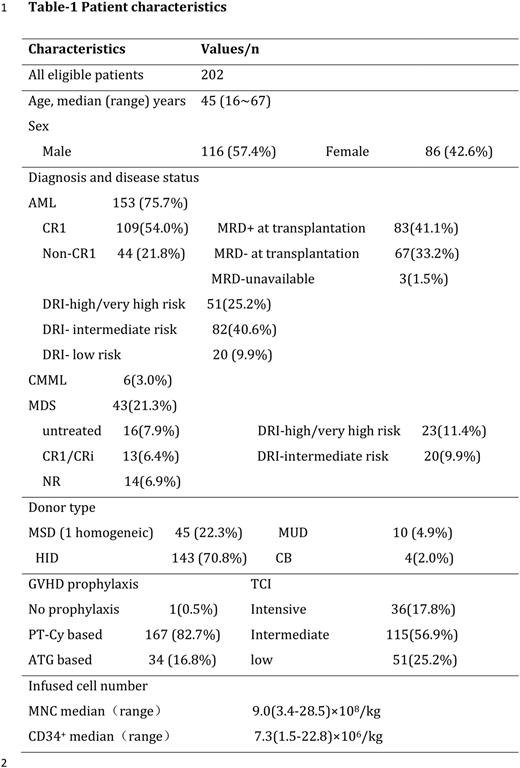Abstract
Fludarabine in combination with full dose of busulfan has become the most popular myeloablative conditioning regimen for allogeneic hematopoietic stem cell transplantation (allo-HSCT) in patients with myeloid malignancies, while relapse was till the main obstacle for cure. We observed a particular low incidence of relapse in patients prepared with double alkylating agents of busulfan and melphalan in our previous single center phase II study. To further evaluate the efficacy of the regimen, we designed a multicenter retrospective study and tried to verify our previous results in large samples. The inclusion criteria were as follows: 1) adult patients (16 to 70 years old) with myeloid malignancies including acute myeloid leukemia(AML), myelodysplastic syndrome with excess blast-1 or -2(MDS-EB-1 or MDS-EB-2) and chronic myelomonocytic leukemia (CMML); 2) patients received first allo-HSCT from HLA matched sibling donors(MSDs), matched unrelated donor(MUDs), related haplo-identical donor(HIDs) or cord blood(CB); 3) conditioning regimen included busulfan (≥3.2mg/kg) and melphalan(≥100mg/m2); fludarabine, cladribine, cytarabine, etoposide or cyclophosphamide could be used in combination, while venetoclax, thiotepa and total body irradiation(TBI) were excluded. From Jan.2020 to Mar. 2022, a total of 202 patients from nine HSCT centers were enrolled in this study. Over ninety-five percent (193/202) patients received conditioning consisted of different dose of fludarabine, busulfan and melphalan. Post transplantation cyclophosphamide (PTCy) based graft-versus-host disease prophylaxis strategy was used in 167 out of all patients. The median follow-up time was 314 days (range, 8~841days) for the whole cohort and the baseline data were summarized in Table-1. Three patients developed primary engraft failure. The median time for neutrophil and platelet recovery were 13 days (range, 9~22 days) and 14 days (range, 9~121 days), respectively. The 100-day cumulative incidence of grade II-IV acute GVHD was 10.9±4.1% and the 2-year cumulative incidence of moderate/severe chronic GVHD was 17.4±5.2%. At last follow-up, eighteen patients died of non-relapse reasons and sixteen patients relapsed including eight patients were still alive. Thus the 2-year non-relapse mortality (NRM) was 8.9%±0.6% and cumulative incidence of relapse (CIR) at 2-year was 7.9±1.9%. The 2-year overall survival (OS) and disease free survival (DFS) were 79.9%±4.3% and 72.4±5.5%, respectively. Subgroup analysis showed no significant difference in OS and DFS when grouping by sex, age(<50y vs. ≥50y), diagnosis (AML vs. MDS), disease risk index (DRI, low risk vs. intermediate risk vs high/very high risk) and transplantation conditioning intensity( TCI, low vs. intermediate vs. intensive). These results identified with our previous study and supported that busulfan and melphalan based conditioning was associated with low relapse rate and acceptable NRM in adult patients with myeloid malignancies. Randomized controlled clinical trial should be warranted to evaluate this regimen further.
Disclosures
No relevant conflicts of interest to declare.
Author notes
Asterisk with author names denotes non-ASH members.


This feature is available to Subscribers Only
Sign In or Create an Account Close Modal